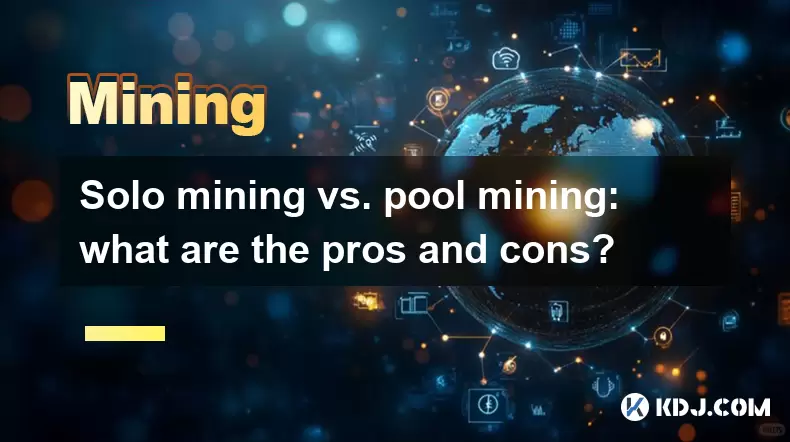-
 Bitcoin
Bitcoin $114200
0.00% -
 Ethereum
Ethereum $3637
0.56% -
 XRP
XRP $2.950
-2.01% -
 Tether USDt
Tether USDt $0.9999
0.02% -
 BNB
BNB $761.0
0.55% -
 Solana
Solana $164.1
-1.38% -
 USDC
USDC $0.9999
0.02% -
 TRON
TRON $0.3332
0.36% -
 Dogecoin
Dogecoin $0.2012
-0.52% -
 Cardano
Cardano $0.7261
-1.41% -
 Hyperliquid
Hyperliquid $37.62
-2.13% -
 Stellar
Stellar $0.3930
-2.65% -
 Sui
Sui $3.441
-0.16% -
 Bitcoin Cash
Bitcoin Cash $563.8
0.70% -
 Chainlink
Chainlink $16.50
0.09% -
 Hedera
Hedera $0.2424
-0.14% -
 Ethena USDe
Ethena USDe $1.001
0.01% -
 Avalanche
Avalanche $22.20
0.00% -
 Litecoin
Litecoin $118.0
-2.48% -
 UNUS SED LEO
UNUS SED LEO $8.991
0.12% -
 Toncoin
Toncoin $3.195
-3.87% -
 Shiba Inu
Shiba Inu $0.00001217
0.12% -
 Uniswap
Uniswap $9.674
-0.21% -
 Polkadot
Polkadot $3.633
1.00% -
 Monero
Monero $295.3
-0.82% -
 Dai
Dai $0.9999
0.00% -
 Bitget Token
Bitget Token $4.321
-0.41% -
 Cronos
Cronos $0.1392
0.73% -
 Pepe
Pepe $0.00001027
-0.89% -
 Aave
Aave $258.5
0.32%
How does the failure rate of mining motherboard affect mining revenue?
Mining motherboard failure directly impacts cryptocurrency mining revenue through downtime, repair/replacement costs, and potential data loss, significantly affecting profitability, especially in large-scale operations.
Mar 25, 2025 at 07:29 pm

How Does the Failure Rate of Mining Motherboards Affect Mining Revenue?
Mining cryptocurrency, particularly Bitcoin, involves specialized hardware, and the motherboard is a critical component. Its failure directly impacts the profitability of your mining operation. Understanding this relationship is crucial for optimizing your return on investment (ROI). A high failure rate translates to lost hashing power and, consequently, reduced revenue. The longer a motherboard is offline for repairs or replacement, the more cryptocurrency you miss out on mining.
The impact of motherboard failure isn't solely about the downtime. Repair costs, replacement expenses, and potential data loss add to the financial burden. The cost of high-end mining motherboards is significant, and frequent replacements can quickly erode your profits. Furthermore, the time spent troubleshooting and resolving these issues represents lost mining opportunities. Proactive maintenance and choosing reliable hardware are vital in mitigating these risks.
The type of mining operation significantly influences the impact of motherboard failure. A large-scale mining farm with hundreds of machines will experience a greater overall revenue loss from even a small percentage of motherboard failures compared to a smaller operation with only a few machines. This is due to the sheer scale of the operation and the cumulative effect of multiple failures. Therefore, large operations prioritize robust hardware and preventative maintenance strategies.
Motherboard failure rates are influenced by several factors. Overheating is a common culprit, leading to component degradation and eventual failure. Poor ventilation within the mining rig contributes to overheating. Using low-quality components or overclocking the system beyond its safe limits also increases the risk of failure. Finally, the age of the motherboard plays a crucial role; older motherboards are more prone to failures due to wear and tear.
Let's delve deeper into how specific aspects of motherboard failure affect mining revenue:
- Downtime: The most direct impact. Every hour a motherboard is down, mining revenue is lost. This loss is proportional to the hash rate of the failed machine and the current cryptocurrency price.
- Repair Costs: Repairing a faulty motherboard can be expensive, especially for specialized mining motherboards. This cost directly reduces your net profit. In some cases, repair might not be feasible, leading to a complete replacement.
- Replacement Costs: Replacing a motherboard involves significant upfront costs. The cost of a new motherboard, coupled with the downtime during the replacement, significantly impacts revenue.
- Data Loss: In rare cases, motherboard failure can lead to data loss, potentially affecting your wallet information and mining progress. This loss is difficult to quantify financially, but it can be devastating.
Choosing a reliable motherboard is paramount. Look for motherboards specifically designed for mining, with features like enhanced cooling solutions and robust power delivery systems. Regular maintenance, including cleaning and monitoring temperatures, is essential in preventing failures.
Investing in redundant systems can mitigate the impact of failures. Having backup motherboards readily available minimizes downtime. This redundancy comes at a cost, but the financial security it offers can outweigh the initial investment, particularly for larger operations.
The choice of mining software also plays a role. Effective monitoring software allows for early detection of potential issues, such as overheating or unusual power consumption, enabling timely intervention and preventing catastrophic failures.
Frequently Asked Questions:
Q: How can I reduce the risk of motherboard failure in my mining operation?
A: Implement preventative measures like proper ventilation, regular cleaning, monitoring temperatures, and avoiding overclocking. Choose high-quality, mining-specific motherboards and consider investing in redundant systems.
Q: What is the average lifespan of a mining motherboard?
A: The lifespan varies significantly based on usage, quality, and environmental conditions. However, expect a shorter lifespan compared to general-purpose motherboards due to the intense workload.
Q: Can insurance cover motherboard failures in a mining operation?
A: Some specialized insurance policies might cover equipment failures in a mining operation, but this isn't always standard. It's crucial to check with insurance providers to understand their coverage options.
Q: How do I calculate the revenue loss due to a motherboard failure?
A: Calculate the lost hash rate during downtime, multiply it by the average block reward and the cryptocurrency price, and consider the repair/replacement costs. This calculation is complex and requires detailed records of your mining operation.
Q: Are there specific motherboard brands known for higher reliability in cryptocurrency mining?
A: Several motherboard manufacturers focus on producing durable and high-performance boards for mining. Researching reviews and comparing specifications before purchasing is essential. However, no brand guarantees zero failures.
Q: What is the role of BIOS settings in preventing motherboard failures?
A: Properly configured BIOS settings, particularly those related to power management and fan control, can significantly impact motherboard longevity and reduce the risk of overheating.
Q: How often should I perform maintenance on my mining motherboards?
A: Regular maintenance is crucial. Aim for weekly inspections of temperatures and cleaning of dust buildup, and more thorough checks monthly. This proactive approach can prevent minor issues from escalating into major failures.
Disclaimer:info@kdj.com
The information provided is not trading advice. kdj.com does not assume any responsibility for any investments made based on the information provided in this article. Cryptocurrencies are highly volatile and it is highly recommended that you invest with caution after thorough research!
If you believe that the content used on this website infringes your copyright, please contact us immediately (info@kdj.com) and we will delete it promptly.
- BONK, PENGU, and Cold Wallet: What's Hot and What's Not in Crypto Right Now
- 2025-08-07 00:30:32
- Mantle Rockets, WeWake Presale: Chasing 100x Potential in Web3
- 2025-08-07 01:13:45
- Solana Price and the Rise of Remittix: Revolutionizing Crypto Payments
- 2025-08-07 01:13:45
- BlockSack (BSACK): The Base Meme Coin Taking Over the Chain
- 2025-08-07 00:30:32
- Ethereum, Transaction Volumes, and SEC Staking: Navigating the Regulatory Landscape
- 2025-08-06 22:30:13
- Crypto, Tokens, and Metrics: Navigating the New Frontier
- 2025-08-06 23:09:22
Related knowledge

What are the differences between mining on Windows vs. Linux?
Aug 06,2025 at 11:29pm
Overview of Cryptocurrency Mining PlatformsCryptocurrency mining involves using computational power to solve complex cryptographic puzzles and validat...

Can you mine cryptocurrency using solar power?
Aug 07,2025 at 12:00am
Understanding the Basics of Cryptocurrency MiningCryptocurrency mining involves validating transactions on a blockchain network by solving complex cry...

How to build a mining rig inside a PC case?
Aug 06,2025 at 11:01pm
Understanding the Basics of a Mining Rig in a PC CaseBuilding a mining rig inside a PC case involves transforming a standard computer chassis into a d...

How to set up a mining farm with multiple rigs?
Aug 07,2025 at 12:38am
Understanding the Basics of a Multi-Rig Mining FarmSetting up a mining farm with multiple rigs begins with understanding the core components involved ...

How to use a server PSU for a crypto mining rig?
Aug 06,2025 at 08:39pm
Understanding Server PSUs and Their Relevance to Crypto MiningCrypto mining rigs demand stable, high-wattage power supplies to run multiple GPUs effic...

Solo mining vs. pool mining: what are the pros and cons?
Aug 06,2025 at 08:15pm
Understanding Solo Mining in CryptocurrencySolo mining refers to the process where an individual miner attempts to solve a block on their own without ...

What are the differences between mining on Windows vs. Linux?
Aug 06,2025 at 11:29pm
Overview of Cryptocurrency Mining PlatformsCryptocurrency mining involves using computational power to solve complex cryptographic puzzles and validat...

Can you mine cryptocurrency using solar power?
Aug 07,2025 at 12:00am
Understanding the Basics of Cryptocurrency MiningCryptocurrency mining involves validating transactions on a blockchain network by solving complex cry...

How to build a mining rig inside a PC case?
Aug 06,2025 at 11:01pm
Understanding the Basics of a Mining Rig in a PC CaseBuilding a mining rig inside a PC case involves transforming a standard computer chassis into a d...

How to set up a mining farm with multiple rigs?
Aug 07,2025 at 12:38am
Understanding the Basics of a Multi-Rig Mining FarmSetting up a mining farm with multiple rigs begins with understanding the core components involved ...

How to use a server PSU for a crypto mining rig?
Aug 06,2025 at 08:39pm
Understanding Server PSUs and Their Relevance to Crypto MiningCrypto mining rigs demand stable, high-wattage power supplies to run multiple GPUs effic...

Solo mining vs. pool mining: what are the pros and cons?
Aug 06,2025 at 08:15pm
Understanding Solo Mining in CryptocurrencySolo mining refers to the process where an individual miner attempts to solve a block on their own without ...
See all articles

























































































